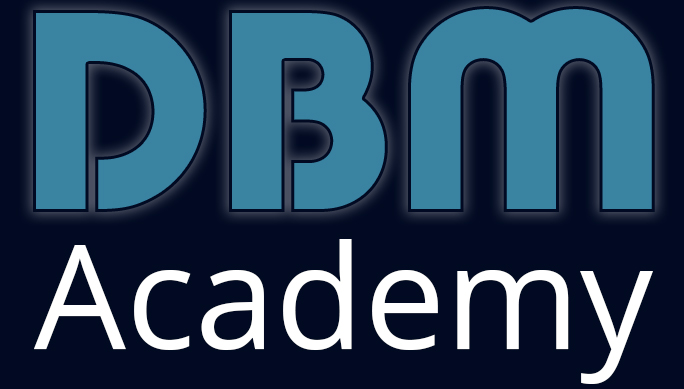Word of the Day | Blockchain Networks

Imagine a digital record book that isn't kept in one central place, but is instead shared and synchronized across many, many computers all over the world. Every time a new entry (a "block" of information) is added to this book, everyone agrees on its validity, and once it's added, it can never be changed or deleted. This continuous, unchangeable record is the blockchain.
A Blockchain Network is simply the entire system of computers (nodes) and rules that work together to maintain and update this shared, digital record book.
Think of it like this:
-
The "Book" is the Blockchain: A constantly growing, unchangeable list of records (transactions, data, etc.).
-
The "Pages" are Blocks: Each block is a collection of new entries added to the book.
-
The "Users/Computers" are Nodes: These are the individual computers that download a copy of the entire blockchain, verify new transactions, and participate in the network.
-
The "Rules" are the Protocol: This is the software and consensus mechanism (like Proof of Work for Bitcoin) that all nodes agree upon to ensure everyone is playing by the same rules, validating transactions, and adding new blocks correctly.
Key Characteristics of a Blockchain Network:
-
Decentralized: No single person, company, or government owns or controls the entire network. Power is distributed among all the participating nodes.
-
Distributed: Every participant (node) has a copy of the entire ledger. If one computer goes offline, the network keeps running because thousands of others have the same data.
-
Secure/Immutable: Once a record (transaction) is added to a block and that block is added to the chain, it's incredibly difficult to change or remove. This is due to cryptography and the way blocks are "linked" to previous ones.
-
Transparent (usually): All transactions are typically visible to everyone on the network (though identities might be pseudonymous).
-
Consensus-driven: For a new block to be added, the majority of the network's participants must agree that it's valid, following the network's rules.
Why are Blockchain Networks Important?
They allow for secure, transparent, and trustless (meaning you don't have to trust a central authority) systems for managing data, value, or agreements. They can be used for:
-
Cryptocurrencies: Like Bitcoin and Ethereum, where the blockchain records who owns what digital currency.
-
Smart Contracts: Self-executing agreements coded directly onto the blockchain (e.g., on Ethereum).
-
Supply Chain Management: Tracking products from origin to consumer.
-
Digital Identity: Securely managing personal data.
-
Voting Systems: Creating verifiable and transparent elections.
Public Blockchain Networks are completely open and anyone can join, read, write, and validate transactions. They are the most decentralized type.
-
Key Features:
-
Open Access: Anyone can download the software, run a node, and participate in verifying transactions.
-
Decentralized: No single entity controls the network; power is distributed among all participants.
-
Transparent: All transactions are visible to everyone on the network (though identities are typically pseudonymous).
-
Immutable: Once a transaction is recorded, it cannot be changed.
-
Secure: Rely on cryptographic proofs and a large network of participants to prevent fraud.
-
Consensus Mechanism: Often use "Proof of Work" (like Bitcoin) or "Proof of Stake" (like Ethereum post-Merge) to agree on the state of the ledger.
-
-
Examples:
-
Bitcoin (BTC): The original and largest public blockchain network. Primarily used as a digital currency and a store of value. It's known for its robust security and decentralization, but has slower transaction times and higher fees on its base layer compared to some newer chains.
-
Ethereum (ETH): The second largest public blockchain. Beyond just a cryptocurrency, Ethereum introduced "smart contracts" – self-executing agreements coded onto the blockchain. This allows for a vast ecosystem of decentralized applications (dApps), DeFi (decentralized finance), NFTs (non-fungible tokens), and more. It transitioned from Proof of Work to Proof of Stake to improve energy efficiency and scalability.
-
Solana (SOL): A newer public blockchain designed for very high transaction speeds and low costs. It uses a unique consensus mechanism called Proof of History combined with Proof of Stake. It's popular for dApps, NFTs, and gaming that require high throughput.
-
Cardano (ADA): Focuses on security, sustainability, and scalability through a research-driven, peer-reviewed approach. It uses a Proof of Stake consensus mechanism called Ouroboros and aims to support dApps and smart contracts.
-
Avalanche (AVAX): A highly scalable platform for launching decentralized applications and enterprise blockchain deployments. It uses three interoperable blockchains (X-Chain, C-Chain, P-Chain) to optimize for different functions and offers high transaction speeds.
-
BNB Smart Chain (BSC): Developed by the Binance cryptocurrency exchange, it's known for its low transaction fees and fast processing times. It's popular for DeFi applications and dApps, often seen as an alternative to Ethereum due to lower costs.
-
There are also Private Blockchain Networks which are controlled by a single organization, which decides who can participate, read, and write data. They are not decentralized in the same way as public blockchains.
In addition there are Consortium Blockchain Networks that are a hybrid between public and private blockchains. They are managed by a group of pre-selected organizations, rather than a single entity.
Understanding these different types helps to see how blockchain technology is being adapted for various use cases, balancing decentralization, security, privacy, and performance based on specific needs.
https://www.dbm.academy/faq for more blockchain vocabulary.
